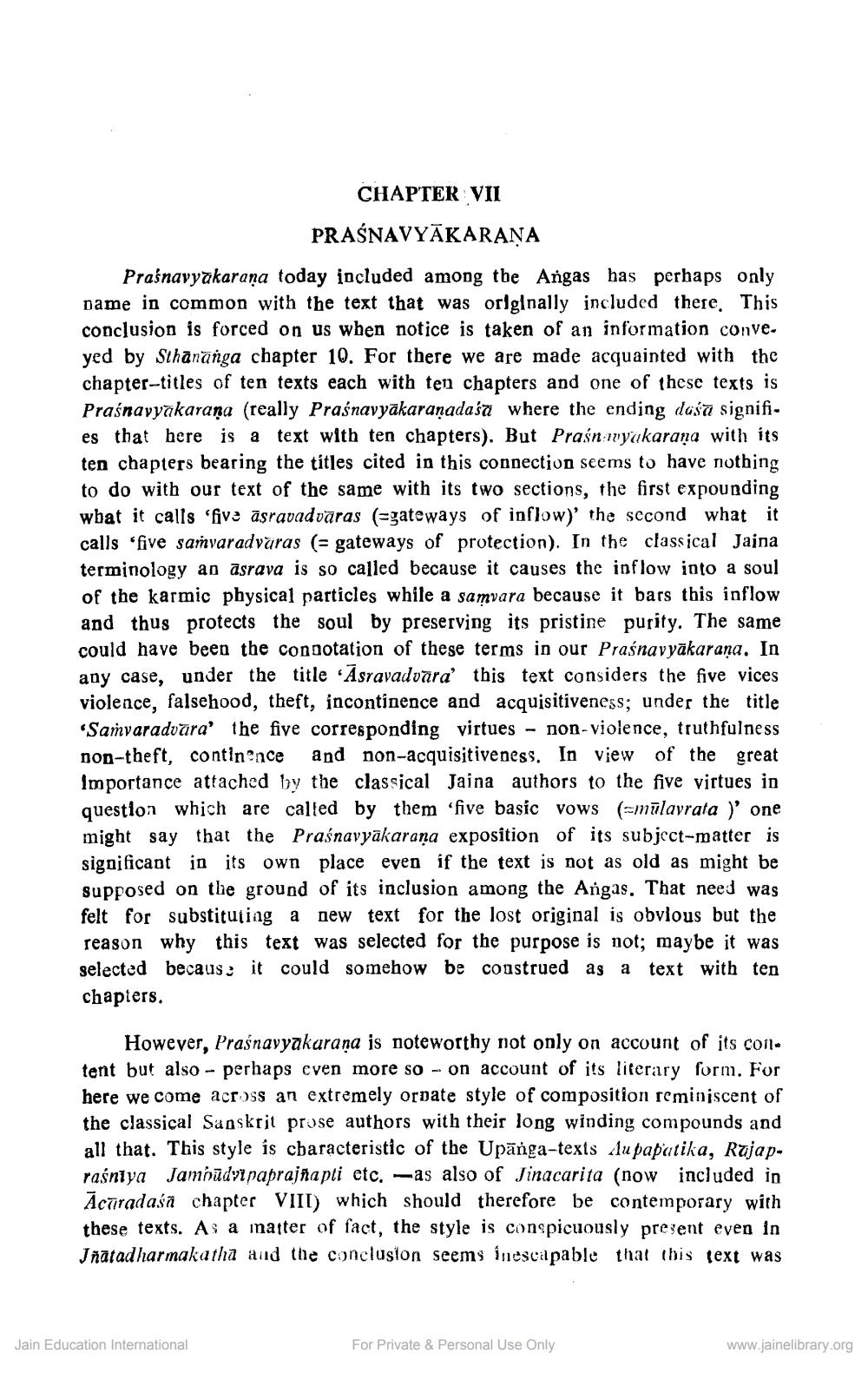________________
CHAPTER VII
PRAŚNAVYĀKARANA
Praśnavyakarana today included among the Angas has perhaps only pame in common with the text that was originally included there. This conclusion is forced on us when notice is taken of an information conve. yed by Sthananga chapter 10. For there we are made acquainted with the chapter-titles of ten texts each with ten chapters and one of these texts is Praśnavyakarana (really Praśnavyākaranadaśa where the ending daśa signifi. es that here is a text with ten chapters). But Praśn wyakarana with its ten chapters bearing the titles cited in this connection seems to have nothing to do with our text of the same with its two sections, the first expounding wbat it calls 'fiva asravadvaras (=gateways of inflow)' the second what it calls 'five samvaradvaras (= gateways of protection). In the classical Jajna terminology an asrava is so called because it causes the inflow into a soul of the karmic physical particles while a samvara because it bars this inflow and thus protects the soul by preserving its pristine purity. The same could have been the connotation of these terms in our Praśnavyākarana. In any case, under the title ·Asravadvāra' this text considers the five vices violence, falsehood, theft, incontinence and acquisitiveness; under the title "Samvaradvara' the five corresponding virtues - non-violence, truthfulness non-theft, continence and non-acquisitiveness. In view of the great Importance attached by the classical Jaina authors to the five virtues in question which are called by them 'five basic vows (=mūlavrata )' one might say that the Praśnavyākarana exposition of its subject-matter is significant in its own place even if the text is not as old as might be supposed on the ground of its inclusion among the Angas, That need was felt for substituting a new text for the lost original is obvious but the reason why this text was selected for the purpose is not; maybe it was selected because it could somehow be construed as a text with ten chapters.
However, Praśnavyakarana is noteworthy not only on account of its coile tent but also - perhaps cven more so - on account of its literary form. For here we come across an extremely orpate style of composition reminiscent of the classical Sanskrit prose authors with their long winding compounds and all that. This style is characteristic of the Upānga-texts du papatika, Rujapraśniya Jambūdvi paprajñapti etc. -as also of Jinacarita (now included in Acaradasa chapter VIII) which should therefore be contemporary with these texts. As a matter of fact, the style is conspicuously present even in Iñatadharmakatha and the conclusion seems inescapable that this text was
Jain Education International
For Private & Personal Use Only
www.jainelibrary.org




